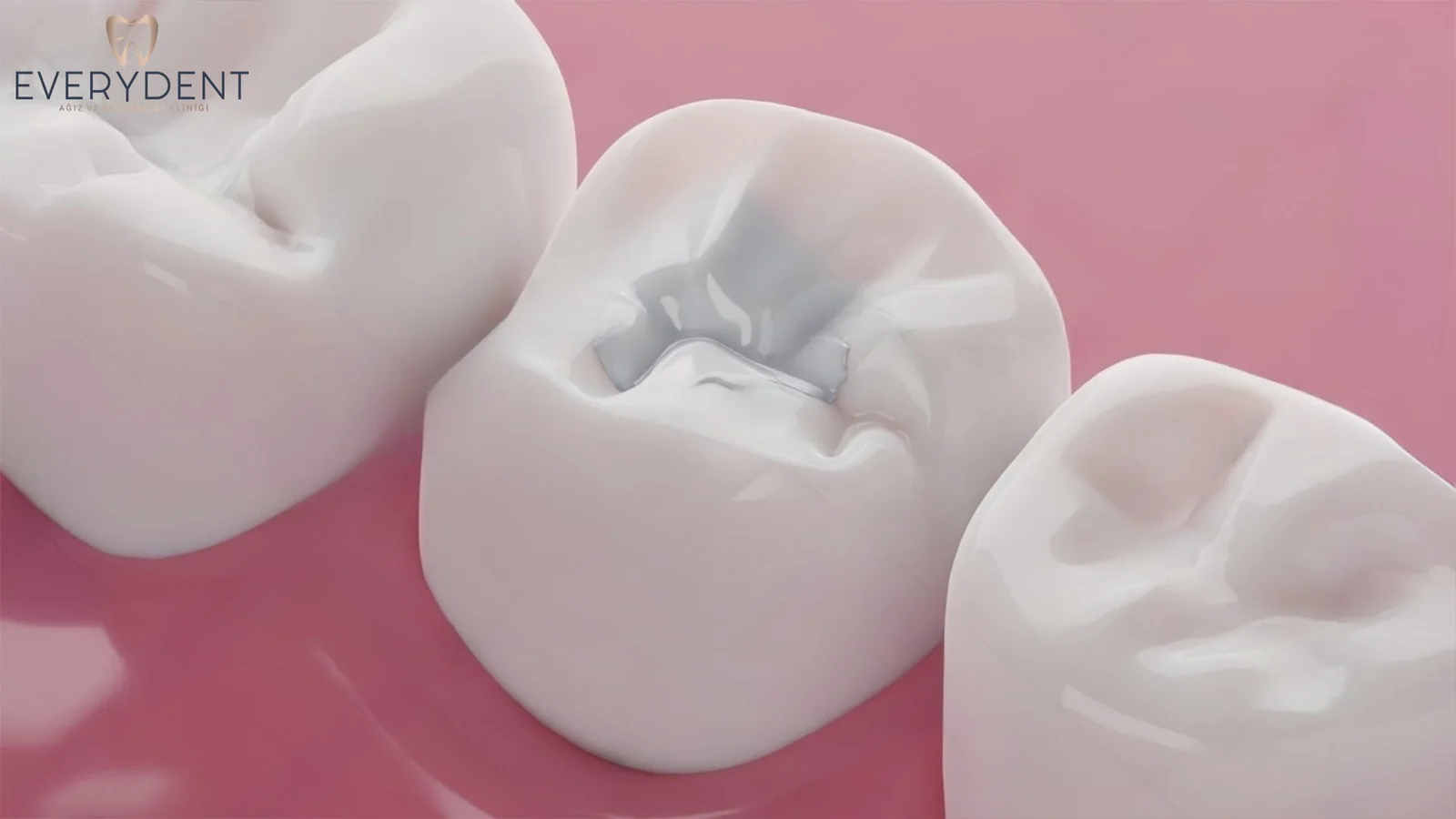Tooth Filling Dental health is one of the most basic elements of our overall health. Our teeth initiate the first step of digestion by chewing food, and this process is vital for the absorption of the nutrients our body needs. However, our teeth play an important role not only in digestion but also in speech function; it would be difficult for us to speak properly without our teeth. In terms of aesthetics, teeth are the foundation of a confident smile. Healthy and properly aligned teeth help us express ourselves better in social life and positively affect our overall appearance. However, over time, various factors can damage our teeth.
Inadequate oral care, incorrect eating habits, traumas or genetic factors can cause tooth decay, fractures or abrasions. Such problems not only damage the structure of the tooth, but also negatively affect the functionality of the teeth. At this point, dental fillings come into play and stand out as one of the most common and effective methods of restoring the lost health and function of teeth. So, what is a dental filling and why is it so important?
Table of Contents
ToggleWhat is a Tooth Filling?
A tooth filling is one of the basic dental treatment methods applied to restore the lost structure and function of a decayed, broken or worn tooth. Our teeth are constantly exposed to various external factors as part of daily life. These factors include inadequate oral hygiene, frequent consumption of sugary foods and acidic foods that cause tooth enamel to erode over time. All of these factors pave the way for the formation of cavities in teeth. Tooth decay is a bacterial infection that causes damage to the tooth enamel and can progress to the inner structure of the tooth, i.e. the deeper layers such as dentin and pulp, if left untreated.
At this stage, the progression of the decay not only weakens the structure of the tooth, but can also lead to severe pain, infections and tooth loss. If the decay is not detected and treated early, more complex and invasive treatments such as root canal treatment may be needed. The most effective way to prevent such problems is to clean the area where the decay occurred and repair the damaged tooth tissue with a dental filling.
Types of Dental Fillings
Dental filling materials can be of various types depending on the needs of the patient and the condition of the tooth. The most common types of dental fillings are:
- Amalgam Filling: Also known as silver fillings, amalgam fillings are made of a mixture of metals such as silver, mercury, copper and tin. Amalgam fillings are known for their durability and longevity, so they are generally preferred in the back teeth. However, due to their aesthetically pleasing gray color, they are not used much in the front teeth.
- Composite Resin Filling: This filling material, which is tooth-colored, is also called an aesthetic filling. Composite resin fillings are preferred especially in the front teeth because they match the natural color of the tooth. Although their durability is slightly less than amalgam fillings, they are often preferred in terms of aesthetic appearance.
- Gold Filling: Gold fillings are long-lasting and quite durable. However, their cost is higher than other types of fillings and may not be preferred by some patients in terms of aesthetics.
- Ceramic Filling: Ceramic fillings, also known as porcelain, are a very superior option in terms of aesthetics. They offer a natural appearance because they are tooth-colored. They are also known for their stain-proof properties. However, ceramic fillings can be more fragile than other types of fillings and their cost is higher.
When is a Tooth Filling Necessary?
A tooth filling is usually necessary when there is decay, fracture or wear in the tooth. After the dentist cleans the decay or damage in the tooth, he/she fills the cavity and restores the structure and function of the tooth. Here are some situations where a filling is necessary:
- Cavities: Tooth decay damages the tooth enamel and creates cavities in the tooth. These cavities provide a suitable environment for bacteria to settle and can reach the deeper layers of the tooth and cause infection. A filling protects the tooth by closing these cavities.
- Broken Teeth: Teeth can break due to reasons such as trauma or chewing on a hard object. Broken teeth weaken the structural integrity of the tooth and can cause pain. A filling helps repair a broken tooth.
- Abrasion: Grinding your teeth (bruxism) or consuming acidic foods and drinks can cause abrasion on your teeth. This abrasion can cause your teeth to become sensitive and lead to bigger problems. A filling protects your teeth by filling these worn areas.
How is a Tooth Filling Done?
A filling is usually a quick and simple procedure. The procedure consists of the following steps:
- Anesthesia: The area where the filling will be done is numbed with local anesthesia. This ensures that the patient does not feel any pain during the procedure.
- Cleaning the Decay: The dentist cleans away the decayed or damaged tooth tissue. This step prepares the area to be filled.
- Applying the Filling Material: The cleaned area is filled with the selected filling material. The filling material is placed on the tooth and shaped.
- Polishing: After the filling is placed, it is shaped and polished to match the natural structure of the tooth. This step ensures that the filling fits properly and the tooth looks natural.

Dental fillings are an effective method to protect your dental health and maintain the functionality of your teeth. When choosing between different filling materials, you should consider factors such as aesthetics, durability and cost. Regular dental check-ups and good oral hygiene are important to extend the life of fillings and protect your overall dental health. It is possible to have a healthy smile and a pain-free life with dental fillings.




